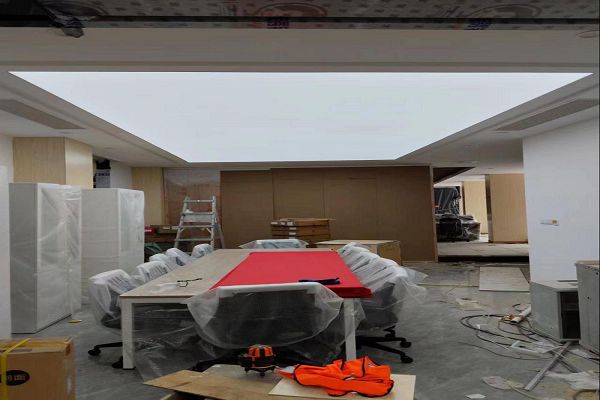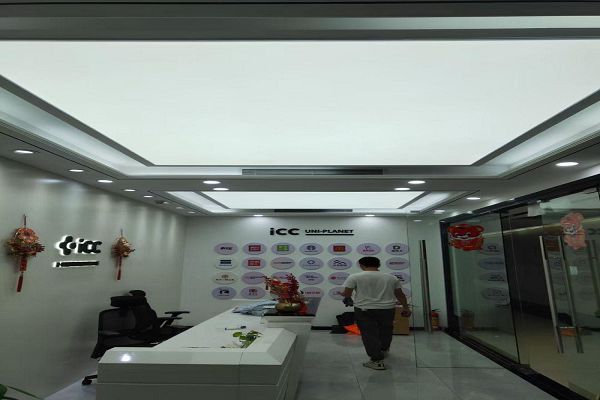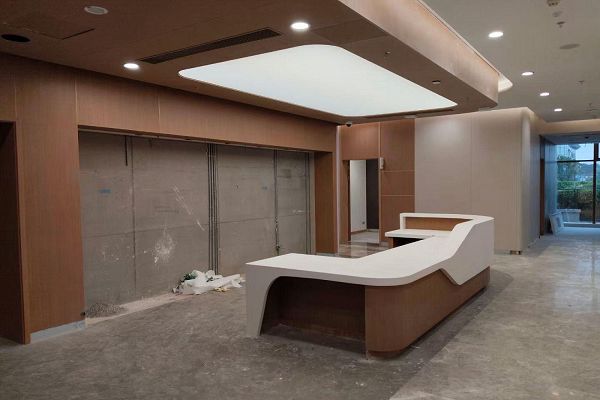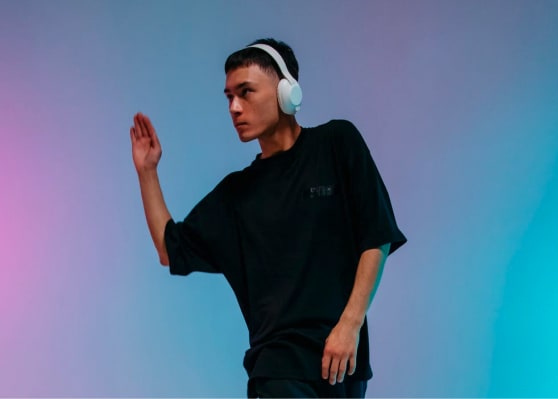What Makes Stretch Ceilings a Game-Changer in Modern Architecture?
Are you tired of old ceiling choices that limit your designs and cost a lot to ship? Many designers face this problem daily.
A stretch ceiling is a light, flexible system. It's made of a special membrane, often PVC, stretched between tracks. It can last 15 years inside, allows custom prints, and is cheap to ship.
I've seen this product become very popular in many countries. It’s not just about a new look; it’s about smart, forward-thinking design. Let me tell you more about why stretch ceilings are a great choice for so many projects.
Stretch Ceiling Fire Ratings Decoded: How Do They Ensure Euro Class B-s1,d0 Compliance?
leading paragraph:
Worried about fire safety with new building materials? It's a top concern for any project, and you need clear, reliable information.
Stretch ceilings meet strict Euro Class B-s1,d0 standards. This rating means they resist fire well, produce very little smoke, and don't drip burning material, ensuring high safety.
!
Understanding fire ratings is crucial. The Euro Class B-s1,d0 rating is a strong mark of safety. This European standard is highly respected. Let's break it down:
Euro Class B-s1,d0 Explained
| Rating Component | Description | Significance for Safety |
|---|---|---|
| B | Material's reaction to fire contribution | Very limited contribution to fire, good flame resistance. |
| s1 | Smoke production level | Minimal smoke produced, aiding visibility during evacuation. |
| d0 | Flaming droplets/particles | No flaming droplets or particles fall, preventing fire spread. |
'Class B' means the material shows good fire-resistant properties; it won't contribute significantly to fire spread. 's1' refers to smoke production. An 's1' classification means the material produces very little smoke when exposed to fire. This is vital for visibility during an evacuation and reduces smoke inhalation risks. 'd0' signifies that no flaming droplets or particles fall from the ceiling during a fire. This prevents secondary fires and injuries. These strict tests give confidence. I always explain these details to clients, especially for public buildings, schools, or commercial spaces where many people gather. It shows we prioritize safety just as much as design. The peace of mind this offers is invaluable, and it helps ensure compliance with building codes. Choosing materials with high fire safety standards is a core responsibility.
50㎡ Seamless Installation: What's The Engineering Behind Massive Stretch Ceiling Panels?
Do you want large, smooth ceilings without ugly lines? Traditional methods often leave visible joints, spoiling the clean, modern look.
Stretch ceilings can cover up to 50 square meters seamlessly. This is thanks to the material's elasticity, strong track systems, and precise tensioning techniques during installation.

Installing a large, seamless stretch ceiling, like a 50㎡ panel, is quite an art and relies on precise engineering. The PVC membrane itself is remarkably strong yet flexible. Before installation, we often heat the room and the membrane slightly. This makes the material more pliable and easier to work with. Then, our skilled team carefully stretches it and locks it into the perimeter tracks using specialized tools. The key is achieving perfectly even tension across the entire surface. If done right, it creates a flawlessly flat, smooth surface that looks incredible. This material is also very durable. Indoors, as I mentioned, it can last for 15 years without fading or losing its shape. Imagine a large hotel lobby, a modern art gallery, or an open-plan office. A seamless stretch ceiling elevates the space, making it feel bigger, brighter, and more contemporary. It's a significant advantage over traditional ceiling types that often show seams or require dropped grids. I’ve seen the 'wow' effect on clients many times when they see such a large, perfect surface for the first time. This capability truly sets stretch ceilings apart.
Beyond Ceilings: What Are 7 Revolutionary Applications of Stretch Membrane in Modern Design?
Are you looking for materials that go beyond the usual? Designers often need versatile options for creative projects and unique expressions.
Stretch membranes are not just for flat ceilings. You can use them for light diffusers, wall coverings, 3D shapes, custom printed art, acoustic panels, exhibition stands, and even backlit features.

Stretch membranes are incredibly versatile, going far beyond simple flat ceilings. One very popular application is for illuminated features, like backlit ceilings or walls. The material diffuses light beautifully, creating soft, even illumination without hotspots. We can also create stunning 3D shapes, curves, and organic forms, which is very difficult or impossible with traditional materials. Custom printing is a huge advantage. As I mentioned, clients love that we can print any high-resolution image, design, logo, or pattern with vivid, fade-resistant colors. This product is so lightweight it can be folded, regardless of its size. This makes international shipping much cheaper and easier compared to bulky traditional ceiling materials. This is a big cost saver for projects far from our production. For outdoor use, such as under canopies or in protected outdoor areas, it can last around 5 years, even with exposure to strong sunlight, though indoor use ensures the full 15-year lifespan without fading. Other innovative uses include effective acoustic solutions to reduce noise in busy spaces, stylish wall coverings, and even creating striking temporary structures for exhibitions and events. The possibilities really expand your design freedom. I’ve used them to create everything from glowing reception desks to artistic, wave-like focal points in large public halls.
PVC vs Aluminum Tracks: What's The Cost-Benefit Analysis for Stretch Ceiling Professionals?
Choosing tracks for stretch ceilings is important. PVC or aluminum? This choice impacts your project's cost, durability, and final look.
snippet paragraph:
PVC tracks are usually cheaper and easier to install. Aluminum tracks cost more but are stronger, more durable, and can support heavier loads or span larger distances without extra support.

When deciding between PVC and aluminum tracks for stretch ceilings, I always consider the specific needs of the project. PVC tracks are generally a good choice for smaller, standard installations, perhaps in residential settings or less demanding commercial spaces. They are more cost-effective upfront, and installation can be quicker and simpler. However, for larger spans, or if the ceiling needs to support additional elements like complex lighting fixtures, integrated ventilation, or heavier acoustic panels, aluminum tracks are usually the better, more robust option. They are much stronger, more rigid, and offer superior structural integrity.
PVC vs. Aluminum Track Comparison
| Feature | PVC Tracks | Aluminum Tracks |
|---|---|---|
| Cost | Lower initial cost | Higher initial cost |
| Strength | Adequate for standard applications | Higher strength, better for large spans/heavy loads |
| Durability | Good, can be affected by temperature extremes | Excellent, very stable |
| Installation | Simpler, faster | Can be more complex, requires precision |
| Flexibility | Good for curves | Can be shaped, offers more rigidity for designs |
| Best Use | Residential, small commercial, budget projects | Large commercial, luxury, complex designs |
Aluminum also tends to be more durable over the very long term, especially in environments with fluctuating temperatures or higher humidity. While the initial cost for aluminum tracks is higher, it can save money in the long run by preventing issues and offering greater longevity. For intricate designs involving sharp curves or complex shapes, aluminum can sometimes provide more precision and a cleaner finish. I always discuss these options transparently with my clients, outlining the pros and cons of each, so they can make an informed decision. For example, in a high-traffic commercial area or a luxury build, the enhanced robustness and refined finish of aluminum might be the preferred investment.
The Hygienic Advantage: Why Do Hospitals Choose Antimicrobial Stretch Ceilings?
Hospitals need super clean surfaces. Old ceiling types can collect dust and germs, making it hard to keep things sterile and safe.
snippet paragraph:
Hospitals choose antimicrobial stretch ceilings because they are easy to clean, resist bacteria growth, and create a seamless, non-porous surface. This helps maintain high hygiene standards effectively.

Hygiene is absolutely critical in healthcare environments like hospitals, clinics, and laboratories. Antimicrobial stretch ceilings are a fantastic solution here. The surface of the PVC membrane is inherently non-porous. This means it doesn't absorb moisture, and it doesn't provide a hospitable environment for microbes, like bacteria, mold, and fungi, to grow and multiply. Some stretch ceiling materials even have special antimicrobial treatments embedded directly into the material for an added layer of protection. They are also incredibly easy to clean and disinfect. You can regularly wipe them down with standard hospital-grade cleaning agents and disinfectants without damaging the surface or compromising its integrity. Because they are installed as a continuous, seamless surface over large areas, there are no joints, grout lines, or crevices where dirt, dust, and germs can accumulate. This is a significant advantage over traditional tiled ceilings, which can be breeding grounds for contaminants. I’ve seen stretch ceilings successfully used in operating rooms, patient recovery rooms, clean rooms, and dental offices. The smooth, clean look also contributes to a more pleasant and calming atmosphere for both patients and healthcare staff. It's a truly smart choice for any environment where impeccable cleanliness and infection control are top priorities.
Stretch ceilings blend innovation with practicality. They offer long indoor life, easy shipping, and vibrant custom prints. This makes them a popular, modern choice worldwide.


